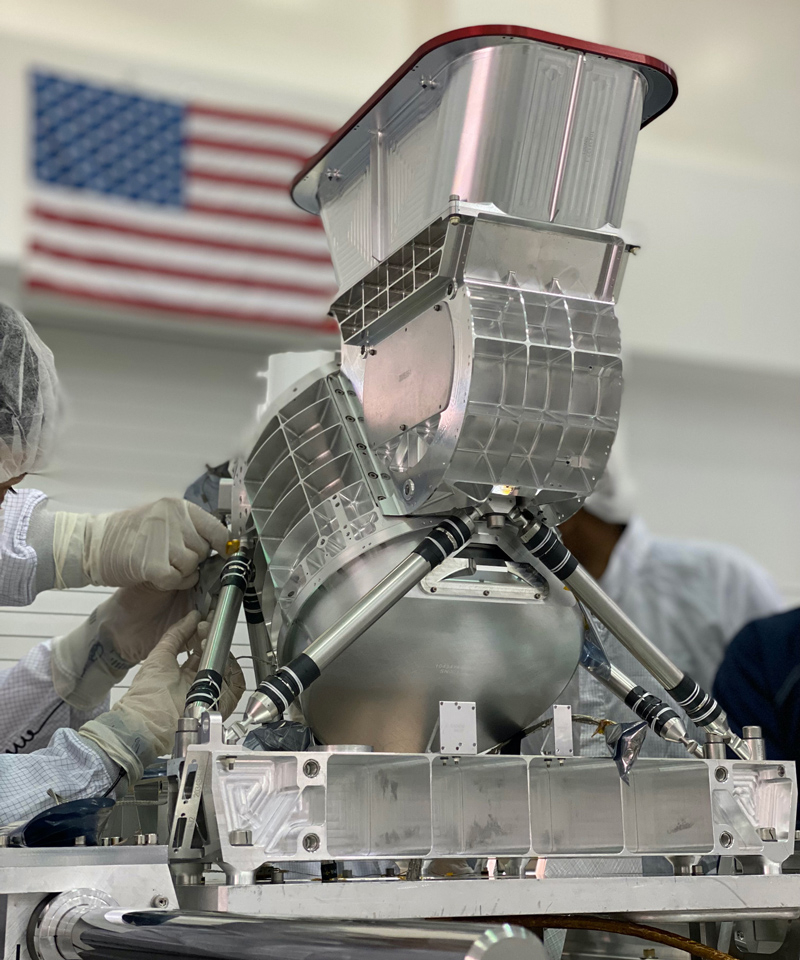All Resources
MISE Assembly

Source:
NASA/JPL-Caltech
Published:
October 28, 2021
Shown is the flight model of Europa Clipper’s Mapping Imaging Spectrometer for Europa (MISE) instrument in a cleanroom at NASA’s Jet Propulsion Laboratory (JPL) in Southern California. MISE will map the distribution of ices, salts, organics, and the warmest hotspots on Europa. In collaboration with the spacecraft’s other instruments – particularly the visible light cameras and ice-penetrating radar – infrared maps from MISE will help scientists understand Europa’s geologic history, which is one of the key characteristics that will help scientists determine if Europa’s suspected ocean is suitable for life.


